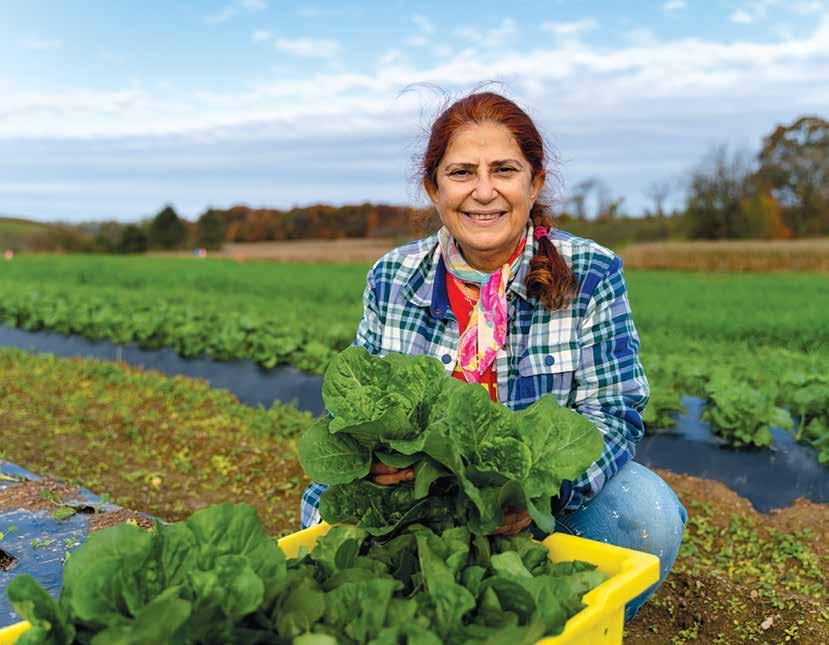
1 minute read
THE MICROBIOME CONNECTION
How Soil And Human Health Are Related
by Kelcie Ottoes
Advertisement
he human gut microbiome, which is critical to fighting off disease, and soil microbiome, which enables plant growth, are vitally important to maintaining all life on our planet. These two communities of microorganisms are indirectly connected in important ways, and researchers are trying to find out more about their interplay.
Human Microbiome
The human gut microbiome consists of trillions of microorganisms of different species. These microbes help to digest food, synthesize vitamins and other important compounds, regulate our immune system and even influence behavior and mood.
The gut microbiome includes both helpful and potentially harmful microbiota that coexist peacefully in a healthy person. But certain diets, or the use of antibiotics or other bacteria-destroying medications, can upset the balance, a state known as dysbiosis, which can impair the microbiome’s functions, leaving the body susceptible to disease.
Soil Microbiome
The soil microbiome has many parallels to the human gut scenario. It consists of bacteria, fungi, archaea and viruses—microorganisms that play an important role in maintaining the health of the soil. They do this by breaking down organic matter, cycling nutrients and protecting crops against harmful pathogens.
Regenerative organic farming practices that promote biodiversity and disdain the use of chemical pesticides and fertilizers develop robust soil that is rich in nutrients and beneficial microbes. In such settings, farmers don’t need to use chemicals, because the microbiome creates disease-resistant soil to fight off threats.
The Nutrition Link
While a direct link between the soil microbiome and the gut microbiome has yet to be proven, soil certainly impacts our health through our diet. A diverse and active soil microbiome is responsible for supporting plant growth. Plants then provide us with the nutrients that our gut microbiome needs to thrive, including calcium, magnesium, and vitamins A, C, E, K and the B complex.
Dan Kittredge, founder of The Bionutrient Institute, explains, “The sophistication of the soil microbiome is connected to the nutritional value of the food that’s produced. The healthier the [soil] microbiome, the healthier the food.” The use of fertilizers and pesticides does not directly produce less nutritious food, but rather their impact on the health of the soil microbiome can impact the crops’ nutritional value.
There is a hypothesis that food has become less nutritious since the mid-1900s. In a 2004 study, University of Texas scientists examined the nutritional value of 43 garden crops from 1950 to 1999 and found that while all 43 foods showed a statistically reliable decline in nutrition, it was likely due to cultivating plants with desired traits, such as larger sizes, faster growing rates and








